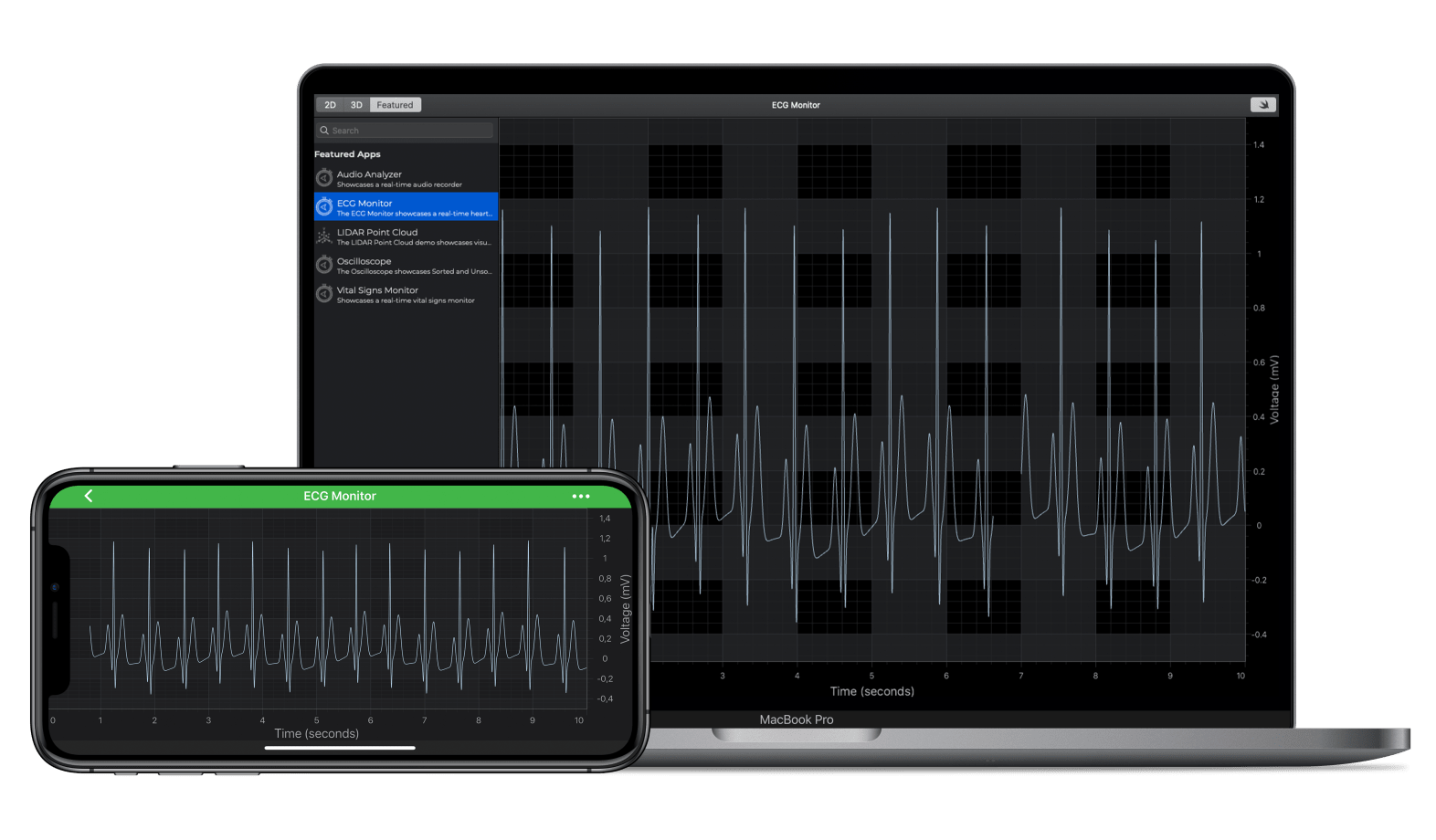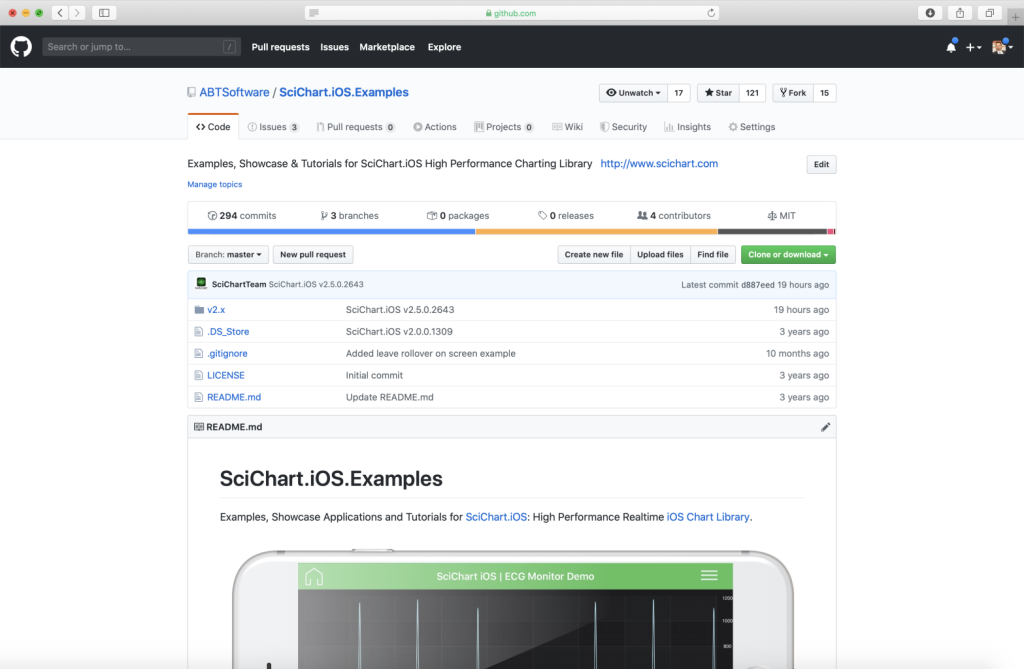iOS & macOS charts - Examples
Please note! These examples are new to SciChart iOS v4 release! SciChart’s OpenGL ES and Metal iOS and Metal macOS Chart library ships with hundred of Objective-C and Swift iOS & macOS Chart Examples which you can browse, play with and view the source-code. All of this is possible with the new and improved SciChart iOS Examples Suite and demo application for Mac, which ships as part of the SciChart SDK.
The iOS ECG Monitor Demo shows how to create a simple ECG / EKG Heart Rate Monitor App using SciChart iOS.
In this example, we use a SCIFastLineRenderableSeries with data provided by SCIXyDataSeries. The DataSeries is in FIFO ‘First in first out’ mode so that old points are discarded once a limit of points is reached. Sweeping is achieved by overlaying two series, so that when the trace reaches the right edge, it wraps around again to the beginning.
The app is realtime and smooth, showcasing that SciChart iOS is suitable for use in realtime medical or health tracking applications.
The Swift and Objective-C source code for the iOS and macOS ECG Monitor Demo example is included below (Scroll down!).
Did you know that we have the source code for all our example available for free on Github?
Clone the SciChart.iOS.Examples from Github.
Also the SciChart iOS and Scichart macOS Trials contain the full source for the examples (link below).


